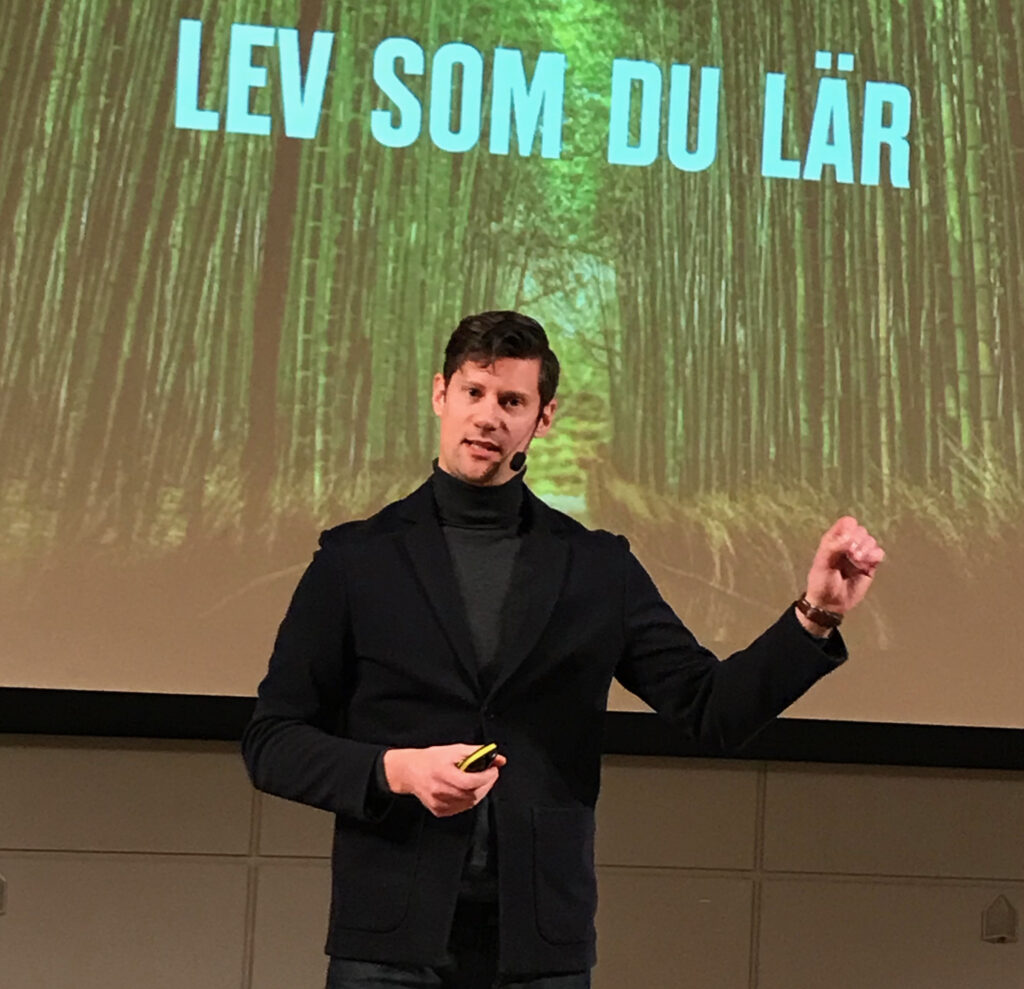
THE SHORT STORY:
Good advertising is not only important for the development of brands and companies. It can also be a positive power in society.
By understanding and avoiding the stereotypes that are often used in advertising, it is possible to influence attitudes in a deeper and more positive way. These conclusions can be drawn from the research that Nina Åkestam did as a doctoral student at the Stockholm School of Economics. Her thesis was named “Understanding Advertising Stereotypes” and reported what happens when creative communication violates social norms and stereotypes.

The image that the advertising traditionally shows is often far from reality and idealized images of people and situations that are often far from reality.
But it is not obvious that these images make people long and dream – or buy. They can just as easily create discomfort, shame and poor self-confidence.
In her research, Nina Åkestam has found that advertising that violates stereotypes and come closer to reality – for example create positive effects. For example, images of homosexuality create positive social effects in terms of empathy.
THE FULL STORY:
“Research on advertising is often done either from an economy aspect, when you look athow it affects social and business economics. Or, you do that from a psychological aspect and look at how it affects people in different ways,” Nina Åkestam explained when I talked to her on the matter.
She, however, wanted to see how these two areas affect each other.
Can good advertising, which communicates equally and affects people positively, also be more profitable?
Traditionally, companies have often regarded marketing as an isolated issue, while social affairs and CSR have been something completely different. “It’s nice if we can do something good, but we have to sell too”, is often the reasoning.
Nina Åkestam’s research shows however that there are no contradictions in this. Nevertheless, so much advertising is made from old stereotyped templates. Which people think still applies.
There are different theories in terms of the role and expression of advertising. The most common speaks of advertising as a mirror of society.
When agencies or advertisers sometimes are criticized for enhancing prejudices or negative trends in society, the defense usually is “advertising does not create trends, advertising only reflects and reinforces the trends that exist”.
But in this case, you could of course argue, that advertisers can choose which trends you want to reflect.
The German professor, Martin Eisendin Berlin, has done a comprehensive metastudy about gender stereotypes in advertising. He has among other things found that the theory of mirrors is quite reasonable, but the advertising is lagging by fifteen years and playing on old attitudes.
Nina Åkestam noted, that if advertising really would have reflected its contemporaries, it would not look like it does on several points:
* Because then every tenth of the ads would be homosexual.
* Every fourth person would have an immigrant background.
* The typical age of people in the advertisement would be 41 years.
* The average weight for model-long women would be 85 kilos, not 53.
* Men would be undressed as often as women.
* Furthermore, women would not become more and more sexualized.
But, as you know, it does not look like that at all. And it is no benefit for companies that the image is so skewed.
“Consumers are much more aware than companies often think. Many in the advertisingindustry also have an idea that people are much more conservative than they are. Maybe it’s the advertising industry which is conservative,” said Nina Åkestam.
In her research, together with her tutors and supervisors Sara Rosengren and Micael Dahlén, she studied how images of gay sexual couples in ads affect consumers in comparison with images of heterosexual couples.
They have then found that images of homosexuality create positive social effects in terms of empathy.
Other studies have looked at how people respond to different pictures in advertising. The interviewees were asked about their first ten spontaneous thoughts when they see ads.
Traditional, stereotype advertising met a lot of protests. People put it in a broader context and see it as part of what develops the world. They think about how prejudiced advertising affects others, if it can hurt people or how they affect attitudes of young people, for example.
The research has also shown that the closer you are, to the ideals of young, beautiful and slim, the more you compare yourself with the pictures of the advertisement. And the more they make you feel insecure and unhappy.
As a result, the advertisement does not strengthen the brand but rather creates reactance, that is, it builds resistance and instead of listening, consumers are disturbed.
“It’s also about the legitimacy of the industry. When I was working at an agency, I could feel discomfort about advertising that the industry rewarded, when rewarding themselves with advertising people do not like. I could be ashamed to be associated with such advertising, even though I have not been involved in it,” said Nina Åkestam.
Femvertising is a countermovement, where advertisers try to push development in a morebalanced direction. It is clear that it decreases the reactivity.
Nina Åkestam herself, together with her supervisors, has found that femvertising works. In all kinds of media as well as in both pictures and film. The reactance becomes so much less.
Instead of protesting against the advertisement, people become curious.
Today, much of this debate is about gender equality and advertising aimed at women, as well as gender stereotypes and sexual orientation. Of course, it is not just there, which much needs to be done. But it’s a good start, because so much more follows.
“Now, we are also looking at ethnicity and male gender roles in the ads,” Nina Åkestam explained, and noted that some of the problem is undoubtedly due to the fact that the advertising industry is so .homogeneous in terms of gender, age, ethnicity and function.
The lack of diversity, of all kinds, is striking.
It can of course affect the work done in the industry, more than you can imagine.


